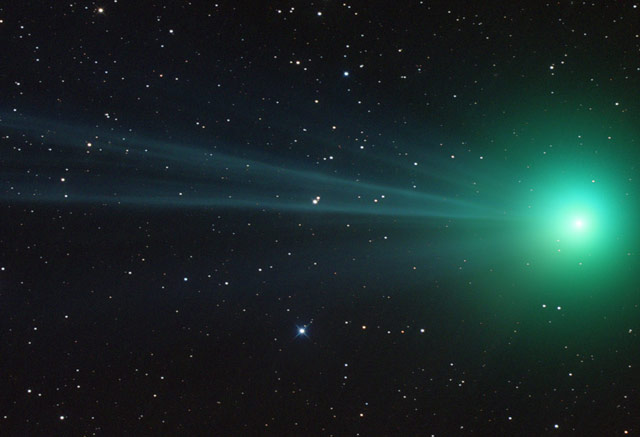Hi everybody
Here's the latest article from the Astronomy site at BellaOnline.com.
NASA Helped Rescue Miners
In the Chilean winter of 2010 thirty-three miners were trapped half a mile below the surface. They were in a hostile environment, a confined space, reliant on supplies from outside - some of the same problems as a space mission. Find out how NASA's decades of experience helped the Chilean rescuers.
http://www.bellaonline.com/articles/art24471.asp
*Skywatch*
(1) Jupiter and the Moon are quite close together tonight (20th October). Lovely sight. And if you have a reasonable pair of binoculars, you should also be able to see Jupiter's four largest moons. They will just be little spots of light. Look to both sides of Jupiter, as you never find all four of them on the same side. http://media.skyandtelescope.com/images/Webvic10_Oct20ev_556px.jpg
(2) A BellaOnline reader reported seeing the comet the other night. Perhaps you can too. Here is a sky map showing its location. http://tinyurl.com/28sw568
(3) The Orionid Meteor Shower has begun. These meteors are part of the debris trail of Halley's Comet.
Here is a picture featured on SpaceWeather.Com, taken by John Chumack in Dayton Ohio today. He has special video cameras to capture such a great collection of meteors, but despite the moonlight you can see there are bright meteors. http://tinyurl.com/22rfrfy
As ever, the best times to watch are just before dawn. If you're up early – or late, depending on your point of view – have a look in the small hours of the 21st and the 22nd. The radiant (where the meteors seem to originate) is in the constellation of Orion, which is how they get their name. Here is a map: http://tinyurl.com/28cvpya
By the way, the Orionids are well placed for both southern and northern hemisphere observers.
For more information:
On comets http://www.bellaonline.com/articles/art33712.asp
On Halley's Comet http://www.bellaonline.com/articles/art44795.asp
On meteor showers http://www.bellaonline.com/articles/art27461.asp
*Anniversaries*
(1) Yesterday (19th October) was the 100th anniversary of the birth of Nobel Prize winner Subramanyan Chandrasekhar. He calculated the theoretical upper limit for a white dwarf star, above which it would collapse into a neutron star or black hole.
The book Empire of the Stars deals with Chandrasekhar's work and his conflict with English astrophysicist Sir Arthur Eddington. There is a review here: http://www.bellaonline.com/articles/art31802.asp
The Chandra X-Ray Observatory was named in his honor. Have a look at some of the fabulous pictures it's taken. http://chandra.harvard.edu/photo/category.html
(2) On October 21, 2008 the Chandrayaan-1 moon probe was launched by India. Its name is Hindi for "moon probe," but there was an element of tribute to one of the nation's greatest scientists. Unfortunately, contact was lost with the craft in August of last year.
That's all for this week.
Please visit astronomy.bellaonline.com for even more great content about Astronomy.
To participate in online discussions, this site has a community forum all about Astronomy located here -
http://forums.bellaonline.com/ubbthreads.php?ubb=postlist&Board=323
I hope to hear from you sometime soon, either in the forum or in response to this email message. I welcome your feedback!
Do pass this message along to family and friends who might also be interested. Remember it's free and without obligation.
Mona Evans, Astronomy Editor
http://astronomy.bellaonline.com
astronomy Newsletter








